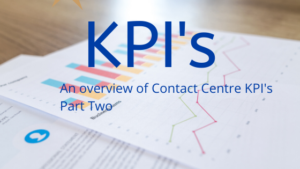This blog post was originally published on EvaluAgent as part of a focus on Quality Assurance within contact centres.
Quality Assurance: How to improve the perception and achieve great results
The perception of Quality Assurance is a struggle for many. It’s often still seen through a negative lens, as a way of ‘catching people out’ or ‘Big Brother is watching’ and for agents it is seen as a necessary evil, a mundane process that critiques their performance.
In reality, quality assurance, if used positively is a supportive, encouraging process that enables agents to be more effective and deliver a better customer experience.
In this blog, I’ll share some challenges I’ve experienced whilst implementing quality assurance measures into teams, but I’ll also share the outcomes and the benefits teams can see once they embrace quality and the opportunities it provides. I’ll also highlight some of the things to watch out for when introducing quality and then finally share some of my top tips for improving the perception of quality assurance in teams.
True story!
Ten years ago, I introduced call recording and quality assurance into a new contact centre that I was implementing for one of our clients. The initial view was one of fear and distrust. One of the team leaders, who was also a Union representative, was very strong in her opposition as she saw it as a way of checking up on staff. She escalated these concerns to the Union who raised it as an issue with the CEO. Fortunately, we were able to overcome these issues and progress with the plan.
Only three months later I was met with a complete turnaround…
There had been a customer complaint about an agents’ attitude and the way they had spoken to the customer. With the software I had helped implement, the Team Leader was able to listen to the call and had the evidence to show that the agent had behaved perfectly, and it was in fact the customer who had been rude and offensive. This evidence enabled the organisation to support the agent and reject the complaint where previously it could have been a grey area. We mustn’t forget of course the customer is always right! This not only showed the agent that the organisation was there to support, but it also proved to be very timely in supporting the need to have this process in place and was then embraced by all.
I recently revisited this same organisation and was thrilled to see that the quality assurance process is still fully embedded with positive outcomes in terms of the high levels of job satisfaction and a high quality of service.
What’s the lesson for quality assurance?
A great success story, but also one of many examples that highlight the initial poor perception of quality assurance.
Having a robust quality assurance methodology and operational process in place will have a positive impact on the quality of service delivered and the customer experience.
It will enable a standard to be set across the front-line teams with a high level of consistency being delivered. For an organisation this can have a real impact on the bottom line with reduced costs through a greater quality of customer engagement.
But the title of the article was about improving the perception of quality assurance…
What’s so good about quality assurance?
Well the first major benefit is that the quality assurance process drives the need for 1:1 engagement with agents. If managed correctly these are pivotal for maintaining ongoing quality performance. I’m often told that organisations have stopped doing regular 1:1’s because they don’t have time. But these regular meetings are the most important role that team managers have and have a significant impact in achieving an efficient and effective service to customers.

Introducing performance stats and information about quality into these meetings ensures that agents know:
- what is expected of them
- how they are performing
- where/how they can improve
They should also be used to demonstrate improvement following on from previous feedback sessions. These feedback sessions should encourage open conversations and be supportive rather than critical. They should show opportunities for improvement rather than criticising historical performance.
The issue I frequently see is that team managers lack the skills or experience to be able to provide effective supportive feedback. Too often there is insufficient training in these areas and is something that needs to be considered if quality performance analysis is to be successful.
You can read more about How to develop a successful quality assurance framework in another blog I’ve written.
Measuring quality is more complex than quantitative measurement.
Systems record the number and duration of contacts and they may even record an outcome. They do not present any information about the quality of an engagement, which for customers, is the most important part.
It’s desirable to produce scores for individuals, teams and the complete service. This shows trends and patterns and identifies where training is required at an individual level or across a whole team.
For example, it can often identify that an individual has started to behave in a particular manner. If not addressed it is seen to be acceptable and others will start to behave in the same way, it becomes the cultural norm. Use the data and explain what it is saying with the team as a whole and then work with the team to improve individually and collectively.
Sharing individual scores with others is a sensitive issue and not something I would typically recommend. Showing an individual their own score and then comparing that with the average or the best is powerful if supported properly with mentoring and training. Publicising a team quality score is a good idea, especially when there are multiple teams as it leads to positive competition.
Customers often state that they don’t mind waiting a reasonable length of time for a response, it is the quality of the response that matters.
It’s therefore surprising that very few organisations report on quality scores. Trend analysis is important and very motivational as there can be a reluctance to let colleagues down.
In summary, here are a few recommendations for improving the perception of quality assurance.
- Quality is the most important measure for customers so don’t be frightened to say that and use the data.
- Share the performance data and scores, make it interesting and relevant.
- Conduct proper 1:1 which support performance and improvement.
- Reward improvement and consistent high scores for quality.
- Train Team Leaders and assessors in providing supportive feedback.
- Use Quality Assurance as a positive process to support and motivate. Use as a carrot rather than a stick!
Improving performance of any kind is rewarding, helping others to improve and make a real difference to customers is even more rewarding.








